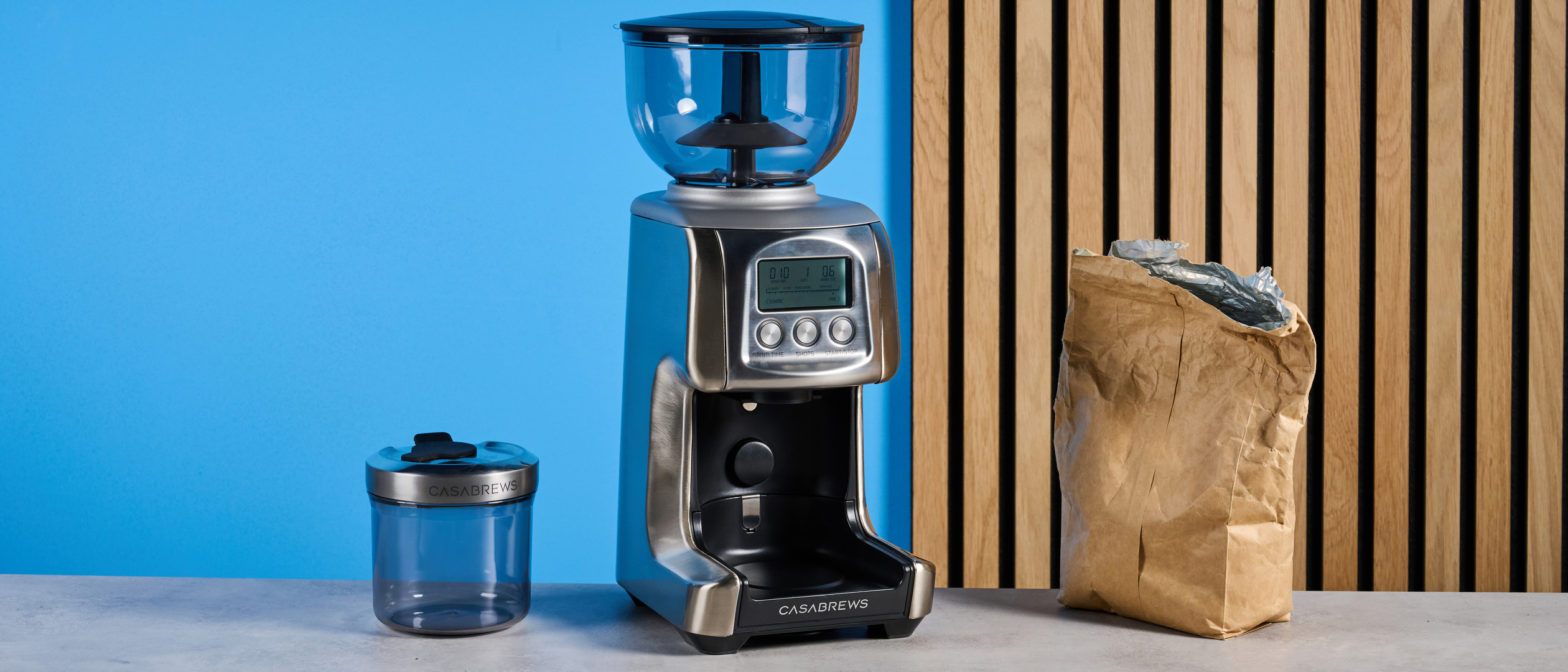Tom's Guide Verdict
If you’re on a seriously low budget, then Casabrews is the coffee brand for you. No, the Tornado isn’t perfect, but this is a grinder better suited for those on a low budget than those who want to be the next James Hoffman or something. If you think inconsistent grind size is a worthy sacrifice for affordability and user-friendly design, then the Tornado could be for you.
Pros
- +
Very affordable
- +
Easy to use
- +
Low retention
Cons
- -
Uneven grind
- -
Quite loud
- -
Prone to clumping
Why you can trust Tom's Guide
Many of the best coffee grinders are expensive. If you’re in the market for a high-quality coffee grinder, you’re looking at easily over $200. Casabrews has definitely spotted a gap in the market, though, and has tried to fill it with the $139 Tornado grinder.
Like other Casabrews gear, the Tornado is budget-friendly. Now, budget-friendly doesn’t always mean bad — I think quite the opposite — but in the Tornado’s case… well, if you’re chasing espresso perfection, this isn’t the one for you.
However… if you’re on the hunt for your first espresso grinder and you don’t want to spend a fortune? Keep reading this Casabrews Tornado review.
Casabrews Tornado review: Cheat sheet
- Who is it for? Beginners, surely
- What does it do well? It’s very affordable for a burr grinder
- What does it cost? $139
- What are its weaknesses? It doesn’t grind that evenly, and it’s quite loud
Casabrews Tornado review: Specs
Price | |
Weight | 8.9 pounds |
Dimensions | 8.7 x 6.2 x 14.2 inches |
Power | Electric |
Burrs | Conical |
Accessories | Container, 51mm cradle, 58mm cradle, bellows, cleaning brush |
Capacity | 14 ounces |
Colors/Materials | Stainless steel, silver |
Casabrews Tornado review: Price & availability
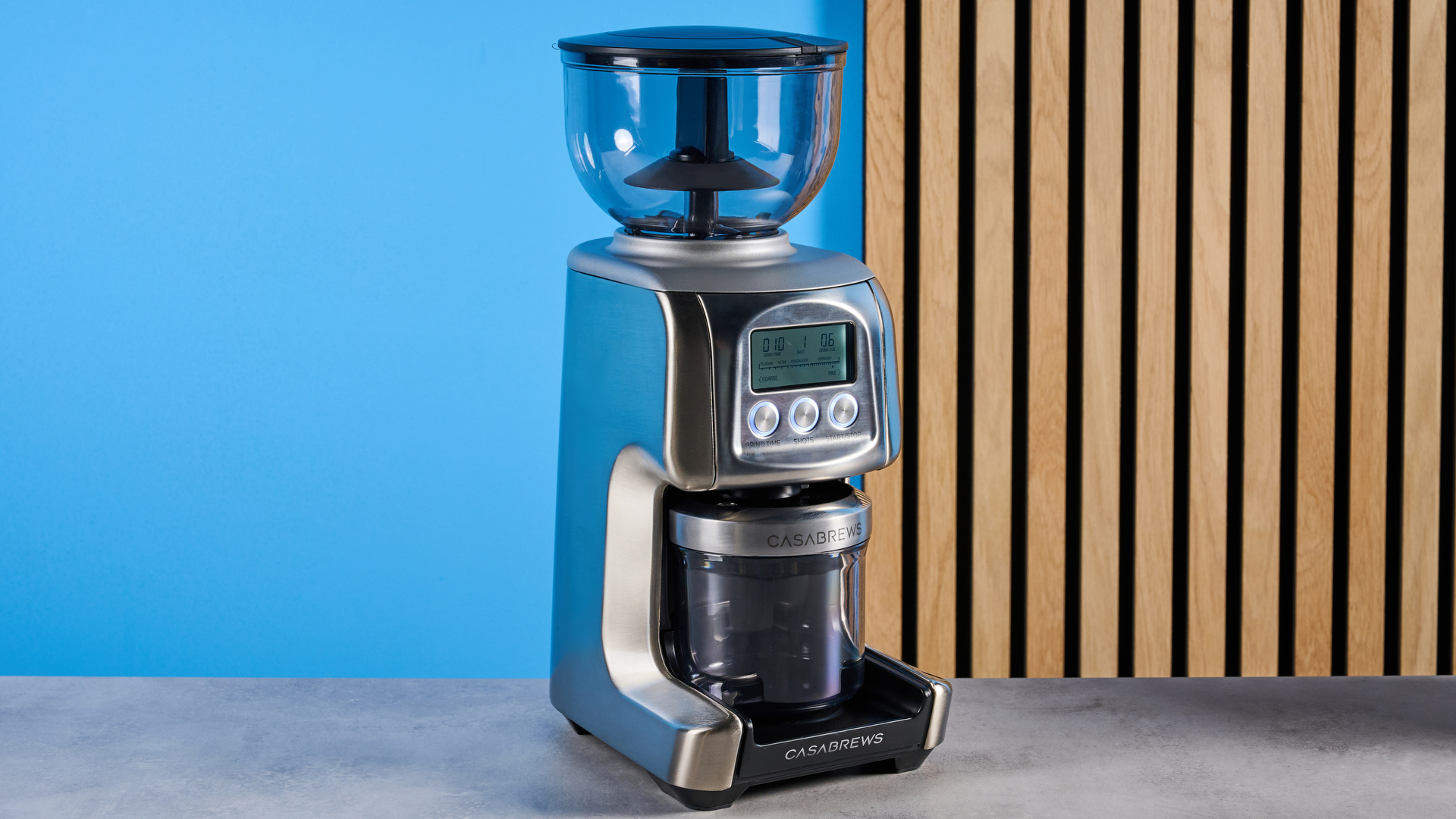
The Casabrews Tornado grinder is $139 from Amazon U.S. At the time of writing, it’s no longer available in the U.K. This is an incredibly low price for a burr coffee grinder.
If you don’t know the difference between a burr and a blade grinder, let me give you a quick rundown. A blade grinder cuts the coffee beans, whereas a burr grinder crushes the coffee beans. Usually, burr grinders are capable of grinding evenly, whereas blade grinders aren’t. So if you’re reading this and thinking to yourself, “Well, that Amazon grinder is only $30!” It’s probably because it’s a blade grinder. I would never, ever recommend you buy a blade grinder.
The low price is no surprise, though: the rest of Casabrews’ catalog is almost too cheap to believe. It’s certainly the cheapest burr grinder I’ve ever seen, and that’s saying something. I’ve tested $600+ grinders, I’ve tested $300 grinders, but I’ve never tested a sub-$150 grinder.
In fact, the second-cheapest grinder I’ve reviewed is the $159 Breville Dose Control Pro. There’s no doubt in my mind: the Tornado is supposed to be a dupe of the Dose Control Pro. Obviously this is just my opinion, so don’t take this as gospel, but come on — look at them.
Get instant access to breaking news, the hottest reviews, great deals and helpful tips.
But the pricing is a little baffling. The Dose Control Pro is $159, but the Tornado is $139. Sure, the Tornado is often on sale for $113 on Amazon, but its MSRP is still only $20 cheaper than Breville. Surely you’d spend a little extra for the big-name brand than risk it on the underdog, especially when the Dose Control Pro performs better than the Casabrews?
The Dose Control Pro isn’t a perfect grinder by any means — it’s fine for beginners, but anyone a bit more serious will think it flawed — so I’m not sure why Casabrews based the Tornado’s design and pricing on it.
If you want a seriously good grinder and can afford to spend a little more, then I’d go for the $199 Baratza Encore ESP, which is an impressive entry-level grinder. Or, if you’ve got a little more budget to play with, go for the $299 Varia VS3 — it’s always worth investing as much into your grinder as you can.
Casabrews Tornado review: Design

The Tornado looks great, especially considering the budget price. It looks pretty much identical to the Breville Dose Control Pro, which can only be a good thing. Breville’s design is on point.
There’s a small LED screen that displays your grind size, grind time, and shot dose. I found the shot dose unit completely pointless, as it differs depending on grind size and time. I would simply weigh out my beans using one of the best coffee scales (I use the Wacaco Exagram Pro), then grind the entire amount in one go.
Unfortunately, you can only grind up to a maximum of ten seconds, which obviously restricts how many beans you can prepare at once. This time changes depending on the coarseness of your grind, so a super-coarse setting can only grind for six seconds.
Even so, it takes literally half a second to press the start button and grind again. I can imagine this would get annoying if you’re prepping coffee for a huge Chemex batch, though.

Anyway, there’s also a grind adjustment dial on the right side of the machine. Turning this dial is both satisfying (I feel like I’m actually doing something, like I’m working in a mill or something) and easy. There’s no tugging, pulling, or resistance. I love this adjustment dial, and I wish better grinders like the Baratza Encore ESP had it.
The grinder also comes with a few portafilter attachments: there’s a 51mm and 58mm cradle. It’s a bit baffling that there’s no 54mm cradle (my Breville Bambino Plus has a 54mm portafilter), but Casabrews’ own budget machines have 51mm, so it makes sense from a business standpoint.
One of the most impressive design aspects is the bellow. Yes, a $139 grinder comes with bellows! At first, I thought they barely worked, but I’d just installed them on top of the hopper incorrectly. You need to make sure the silicone is slotted into place properly; otherwise, yeah, it won’t work.
All in all, the Tornado looks like a more premium grinder and has a pleasing array of attachments. I have nothing negative to say about its design, except for its performance, which I’ll address now.
Casabrews Tornado review: Grind adjustment
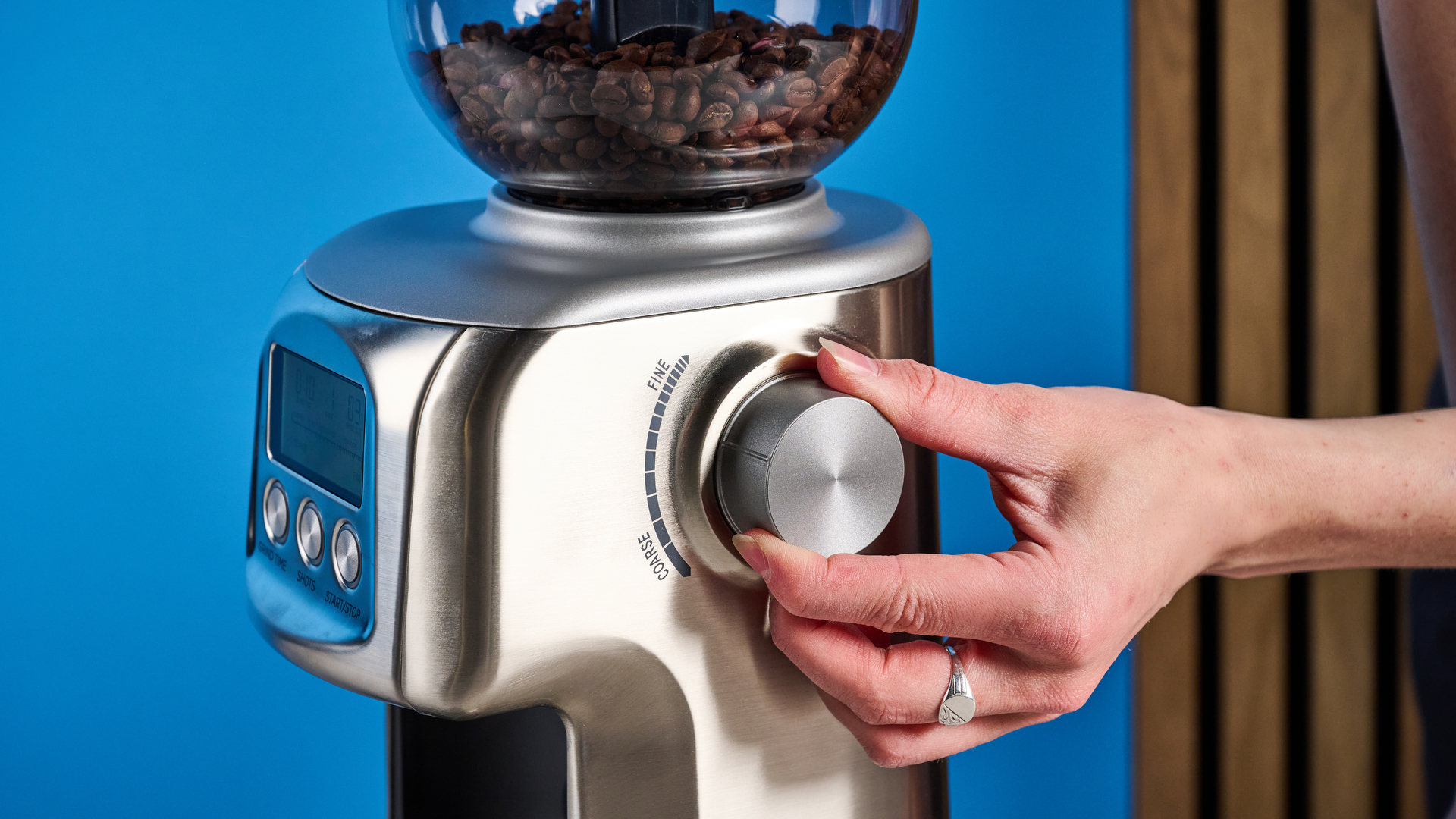
Adjusting the grind on the Casabrews Tornado is extremely straightforward. You simply turn the dial on the side of the grinder: it will change grind size without you having to get close to the actual burrs.
On the Dose Control Pro and the Baratza Encore ESP, you adjust the grind by moving the hopper itself, and I like that the Casabrews model utilizes a dial. Somehow, it feels less daunting for a newcomer.
The Tornado has a whopping 73 grind settings, which at first impressed me. However… I quickly discovered that despite the huge amount of grind settings, these grind sizes are not as uniform as I’d want. I would rather Casabrews perfect the performance of a smaller range of grind sizes than cram in loads of flawed adjustments.
Adjusting the grind is super easy, and I love that the LED screen tells you exactly what each grind size is used for. For example, “13” is the middle of the espresso range, and “35” is percolator. This is a great way to visualize grind size for a beginner.
All in all, this is an entry-level machine targeted at one particular type of customer: a complete beginner who’s not overly fussed about perfection. While it’s trickier to learn espresso or pour-over on a flawed grinder, it’s also a bit ridiculous to ask newcomers to drop $500 on a high-quality grinder, so it’s swings and roundabouts.
Casabrews Tornado review: Performance
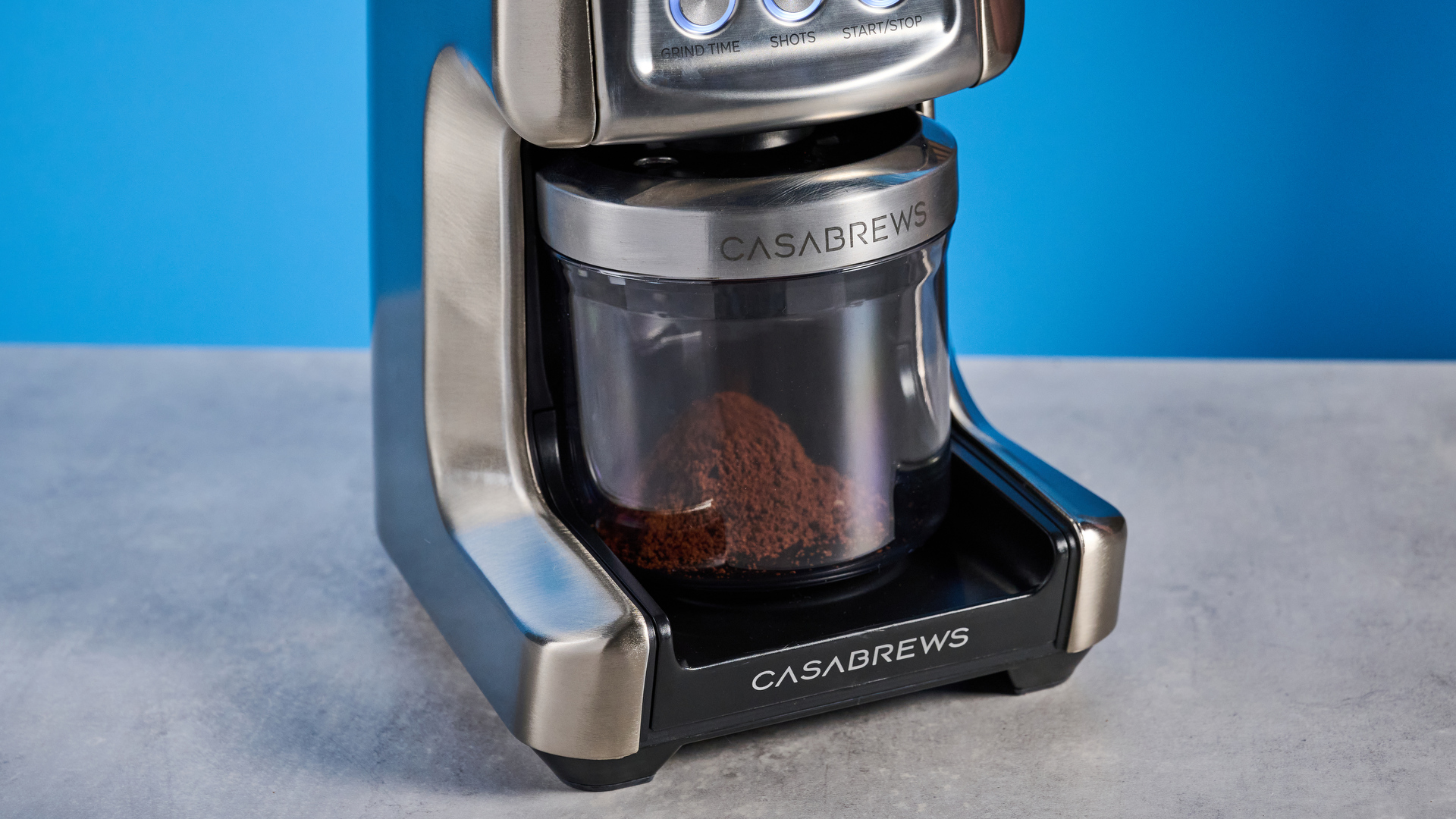
As with all grinders I review, I put the Tornado through a series of standardized tests. I tested its uniformity (are the coffee grinds the same size?), retention (how much coffee gets stuck in the burrs?), static, and clumping. Static refers to how much coffee sticks to the grinder, and clumping refers to clumps in the coffee post-grind.
Ease of use
First, though, I’ll discuss ease of use. The Tornado grinder is really easy to use and would be an ideal beginner grinder. There are a number of buttons on the front of the grinder: one for time, one for grind size, and one for stop/start. If you want to adjust time, you press the time button until the number reaches your preferred amount.
Grind size is controlled via a dial. For example, if you wanted to adjust the grind size, you turn the dial. The LED screen shows you your precise grind size, so you always know your settings even after long periods of disuse. This is a major downside of premium grinders like the Eureka Mignon Specialita ($649) — it can be tricky to know your grind size until you grind a little bit and literally see with your own eyes.
The Tornado is as easy to use as the grinder it’s (allegedly) a dupe of: the Breville Dose Control Pro. While neither the Tornado or the Dose Control Pro are “technically” perfect grinders, they’re really straightforward and ideal for beginners. If you don’t want to spend a lot on a first grinder, but you know you need a grinder, I’d recommend it for its ease of use wholeheartedly.
If you’re chasing perfection, though, wait until you see these uniformity and retention results. You might want to steer clear of the Tornado.
Static & clumping
One thing I was really impressed by is the lack of static on the Casabrews Tornado. I think Casabrews has proactively mitigated this issue by forcing you to use a grounds container. You can’t just put a random bowl under the dispenser: you have to use either the grounds container or a portafilter.
As a result, the grinder grinds into the container. There’s no static grounds stuck to the side of the grinder or spitting out during grinding. I really appreciate this accessory as it makes cleanup much easier — nay, nonexistent. Go Casabrews!
However, this does mean you can’t grind into whatever you like, but honestly, this is a non-issue. I found it more than acceptable to grind into my plastic container and then scoop into pour-over and portafilters post-grind.
Here’s a photo of the lack of static.
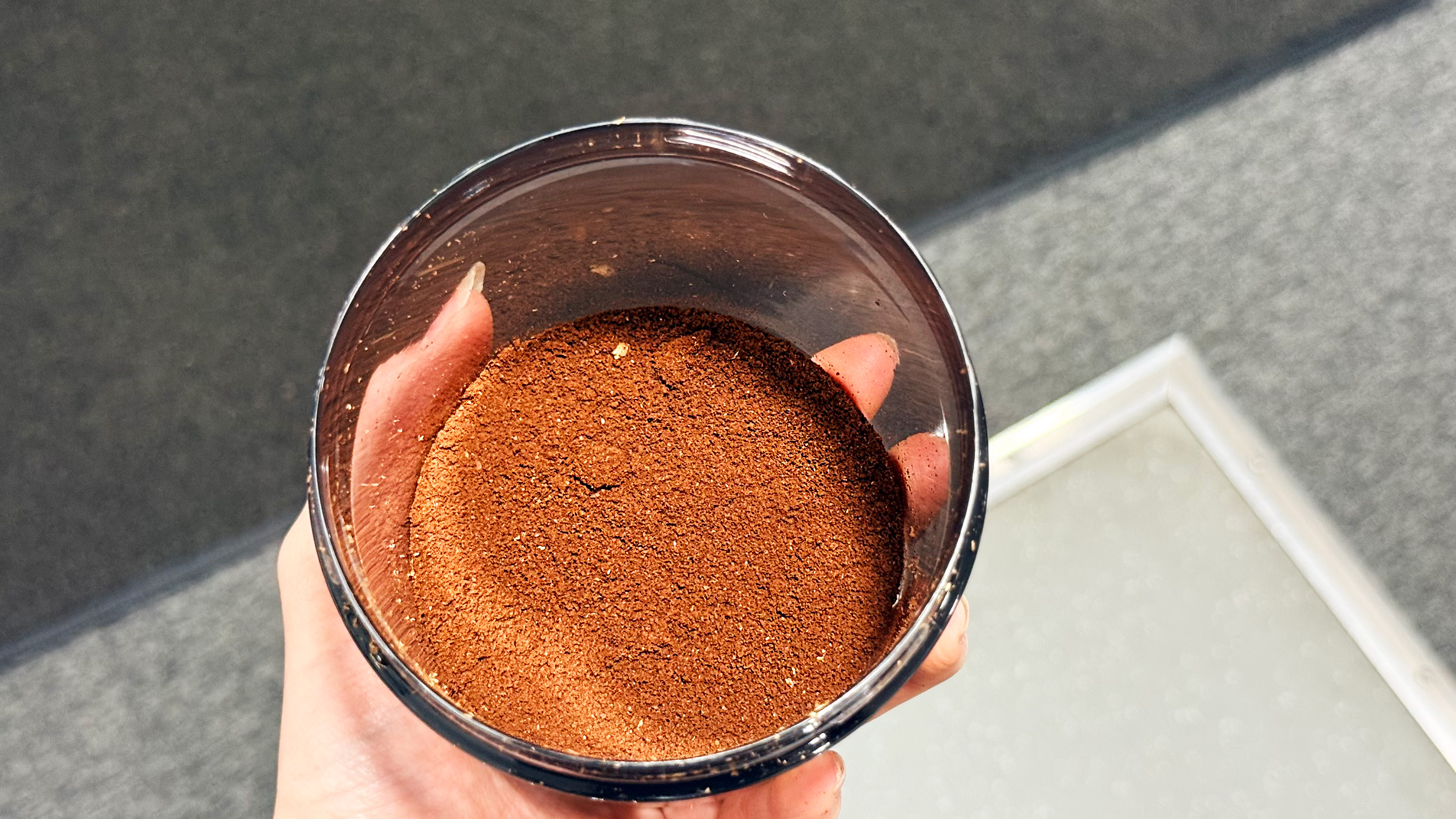
However, the grinder fans amongst you will immediately recognise another problem. Yes, that is a clump. A pretty big clump, actually.
Obviously if you use a WDT tool, you will eradicate clumps anyway, so this is less of an issue. But for pour-over or if you don’t have a WDT, you’ll want a grinder that doesn’t clump. You can obviously use something a bit less specialized like a fork or a chopstick to distribute your grounds, but clumps of this size aren’t ideal.
However, if you’re not an espresso or pour-over purist, then you might be less upset by the sight of a clump. If you’re a beginner, the Tornado grinder is likely the best-value burr grinder money can buy.
Uniformity
One of the most important factors in a coffee grinder is uniformity. This basically means: are all the coffee granules the same size? If you have lots of variety in grind size, your coffee will taste bad, as some grounds will be over extracted, and some will be under extracted.
As with every grinder I review, I put the Casabrews Tornado through a series of standardized tests. These tests provide a holistic view of how evenly a grinder grinds. I’m looking for big jumps — for example from 0% on 300 to 100% on 500 for pour-over, or a big jump from 0% on 1100 to 100% on 1400 for cold brew.
Here are my results. I use Kruve coffee sifters — $89 on Amazon — which I’d recommend for other coffee nerds.
Grind size | 300μm | 500μm | 800μm | 1100μm | 1400μm |
Finest | 0% | 50% | 90% | 100% | 100% |
Fine | 0% | 20% | 100% | 100% | 100% |
Medium fine | 0% | 0% | 60% | 100% | 100% |
Medium | 0% | 0% | 80% | 99% | 100% |
Medium coarse | 0% | 0% | 50% | 90% | 100% |
Coarsest | 0% | 0% | 20% | 40% | 60% |
As you can see, the Tornado grinder isn’t particularly uniform. You can see it in the finest grind setting, which was bigger than 300 microns, yet only half was between 300-500 microns. Again, 10% of the “finest” grind ended up being over 800 — this is percolator size.
Unfortunately, the grinder physically cannot grind finer than 300 microns, so Turkish coffee is a no-no. I would be apprehensive about grinding light roast beans for espresso, as these require a finer grind than dark roast.
I used the Tornado with my Breville Bambino Plus, and it didn’t go particularly well. For each double shot, I dosed 18g of finely ground coffee. However, the machine pulled a 36g shot in 33 seconds and struggled to obtain a smooth flow. This is due to the inconsistent grind rather than the granule size, as the actual coffee was ground to pretty much the same size as my usual grinder, the Comandante C40 MK4.
After, I ground my beans medium-coarse to use with the Stanley Classic Perfect-Brew Pour Over. It took a whopping 10 minutes to brew 15g of coffee at a 1:20 ratio, which is way too long. This shows that the grind was uneven, as the finer granules clogged up the filter. When I ground my beans with the Eureka Mignon Specialita, it took 7 minutes — still ridiculous, but better.
Retention
As with all grinders I test, I evaluated the average retention of the Tornado. I did this by weighing out 20g of whole beans on my Fellow Tally Pro, grinding on medium, and then weighing the final grind. Obviously, I emptied the burrs and cleaned them of grounds between each test.
Weight before grinding | Weight after grinding | Retention | Average retention |
20g | 20g | 0g | - |
20g | 19.8g | 0.2g | - |
20g | 19.4g | 0.6g | 2% |
The average retention was 2%, which is less than the Breville Dose Control Pro’s average retention of 2.15%. However, the Dose Control Pro was more uniform with its retention: there were two instances of dispensing 19.9g. The Tornado has more discrepancy between the retained amount: 0g, 0.2g, and 0.6, as opposed to 0.1g, 0.1, and 1.1.g.
However, the Tornado has a considerably larger retention than the Baratza Encore ESP. The latter’s average retention was 1.55%, which is obviously much better. As I’ve said many times already, if you’re a beginner but you have a little extra to spend and you want the best-value basic grinder, you need to check out the Baratza Encore ESP.
Casabrews Tornado review: Storage & maintenance
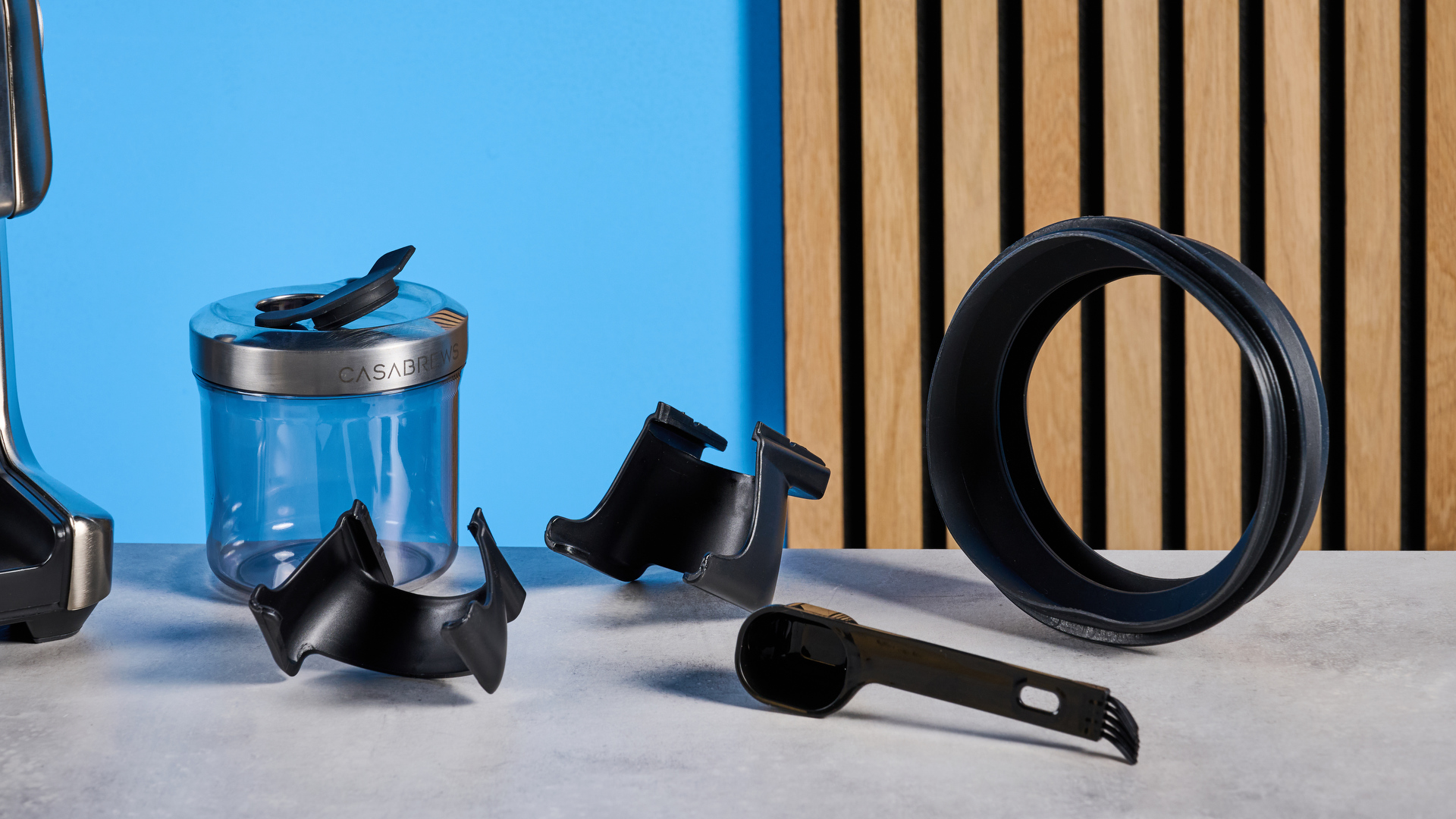
As far as coffee grinders go, the Casabrews Tornado is about average size. It’s not particularly small, but it’s not overly bulky, either. If you’ve got a small space — like me — then I’d recommend a hand grinder over an electric one. You can put them in drawers or cupboards between uses. I’d recommend the 1ZPresso J-Ultra, which is $199.
As with other Casabrews products, you get a 1-year warranty with the Tornado grinder. This is standard for coffee grinders (except the truly premium Comandante grinders, which have a lifetime warranty). Some Amazon reviewers have noted that their Tornado grinders stopped working after a few months, but this doesn’t seem to be widespread.
Casabrews provides a cleaning brush so you can keep those burrs spick and span — but don’t get them wet. Never, ever clean a grinder with water! Bellows and brushes only.
Casabrews Tornado review: Verdict
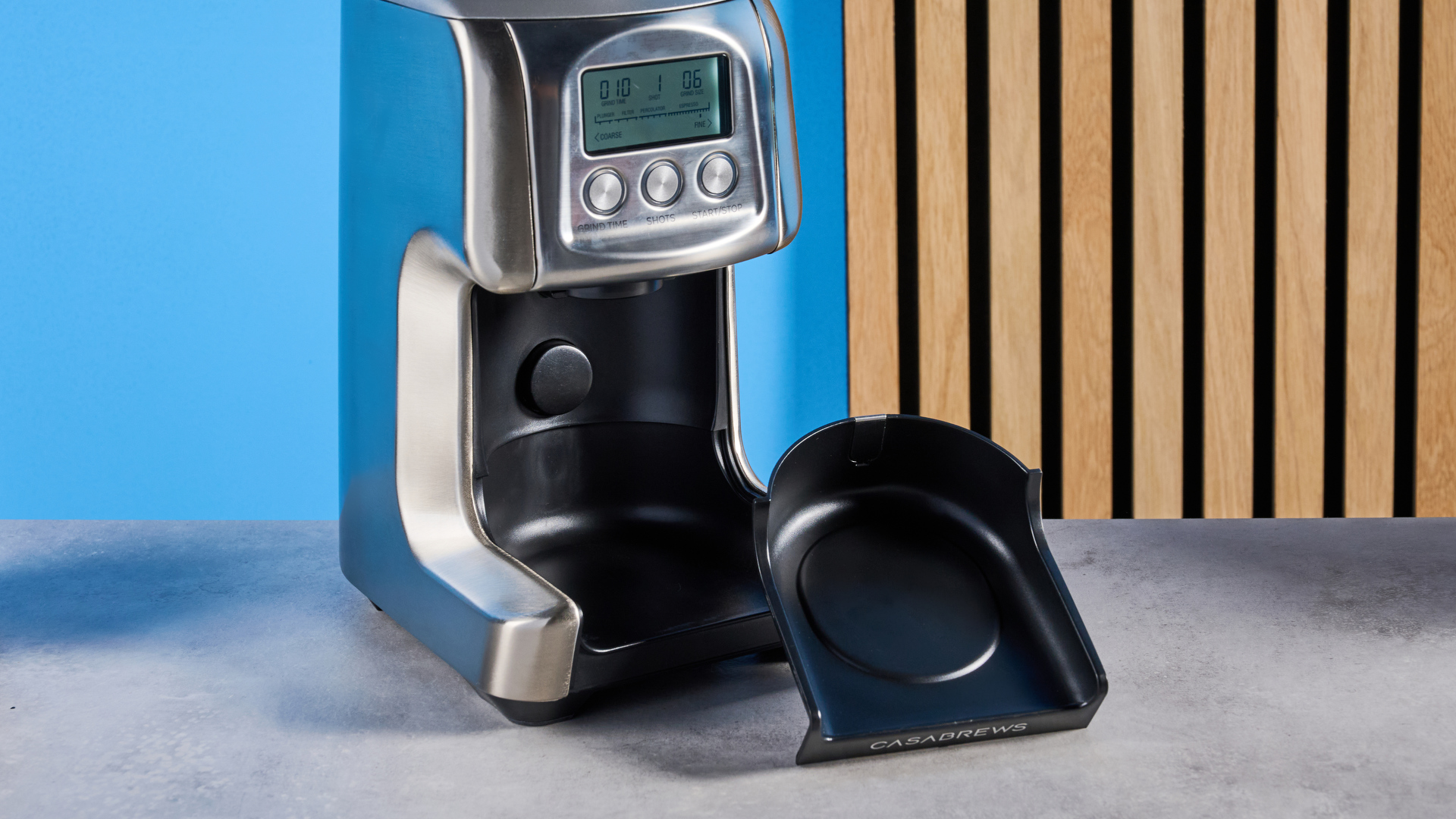
As I’ve said many times throughout this review, the Casabrews Tornado grinder is perfect for one type of home barista: One who does not chase perfection. If that sounds like you, then I’d recommend the Tornado.
However, if you’re on a budget but want to upgrade your barista skills, I don’t think this is the grinder for you. Due to inconsistent grind size, I think you’d be better off spending an extra $60 and getting the Baratza Encore ESP.
All that being said… I’ve never seen a burr grinder this affordable, and I don’t think I’ll see another for a while. Although it’s not perfect, it’s cheap, and for some people, that’s the most important thing.

Erin Bashford is a senior writer at Tom's Guide, focusing on reviews. She has a Masters in Broadcast and Digital Journalism from the University of East Anglia. As an ex-barista, she knows her way around a coffee machine, and as a music lover, she's constantly chipping away at her dream of having a multi-room home sound system. In her spare time you can find her reading, practising yoga, writing, or stressing over today’s NYT Games.
You must confirm your public display name before commenting
Please logout and then login again, you will then be prompted to enter your display name.
